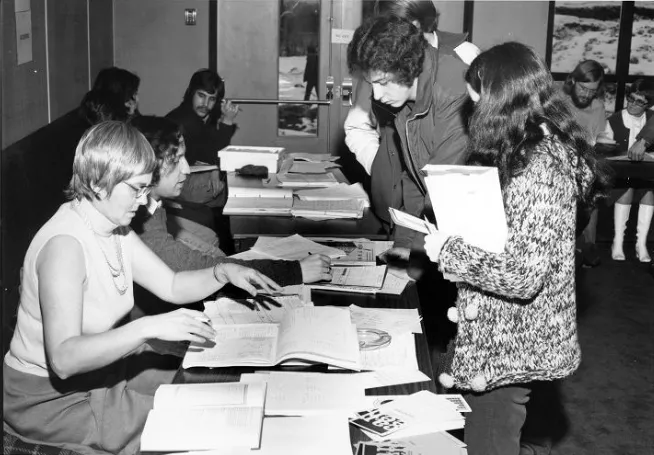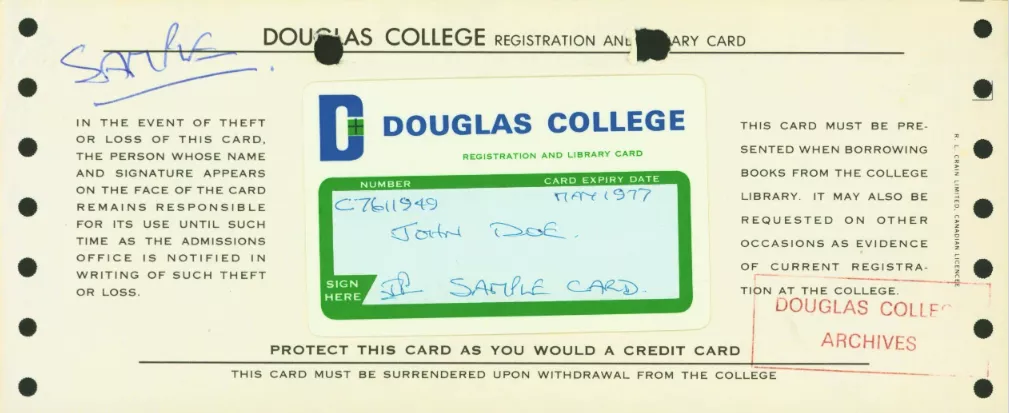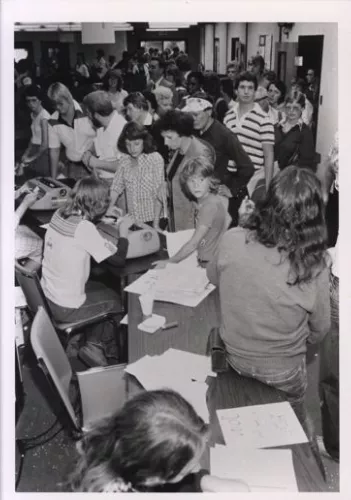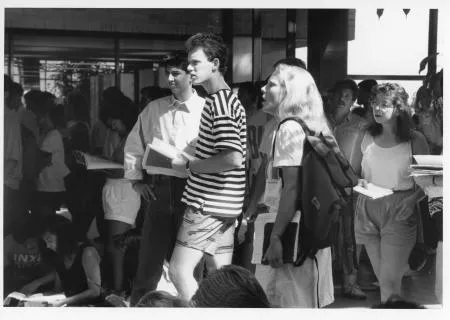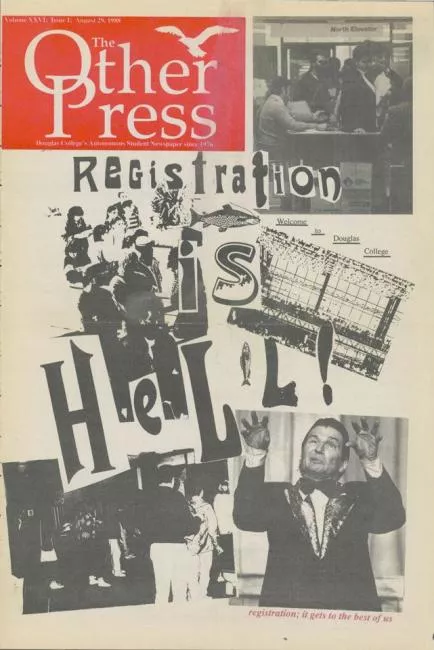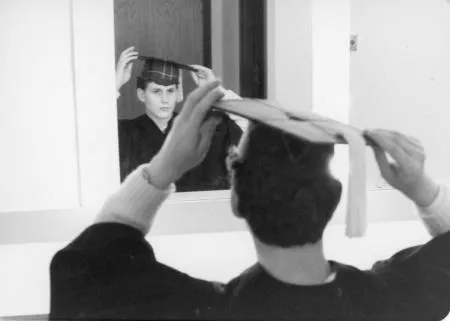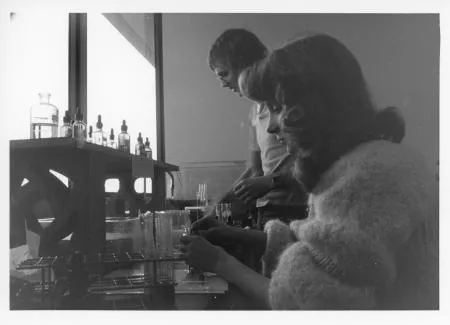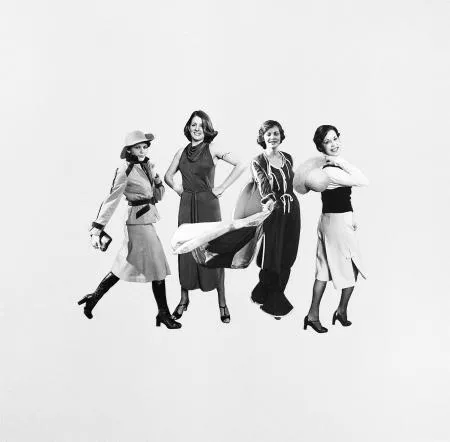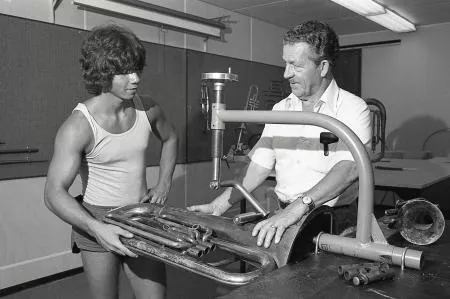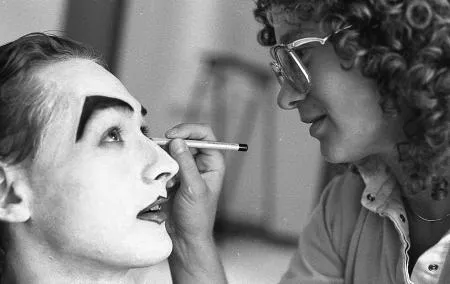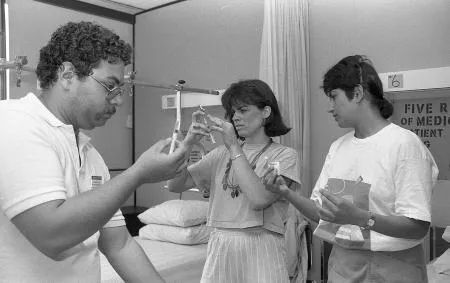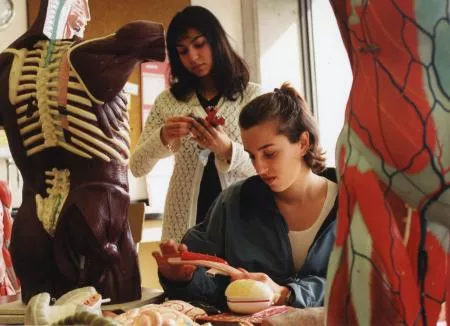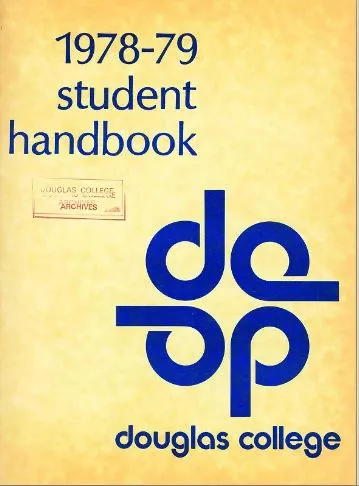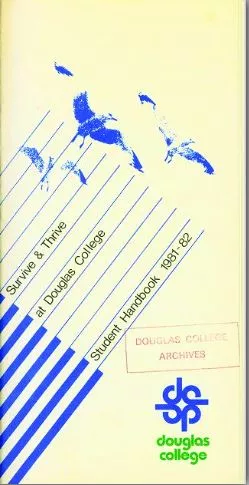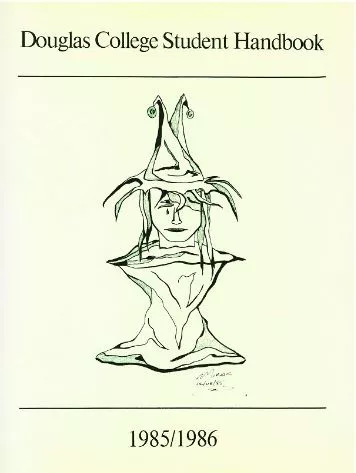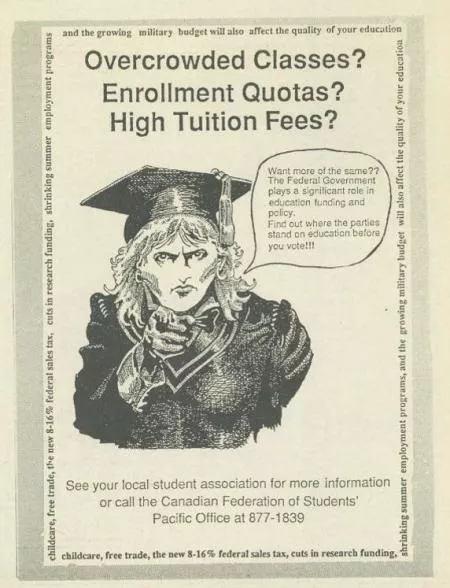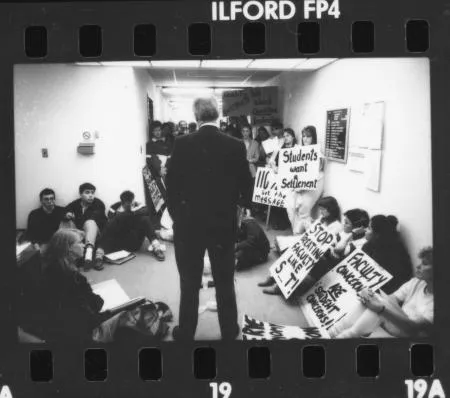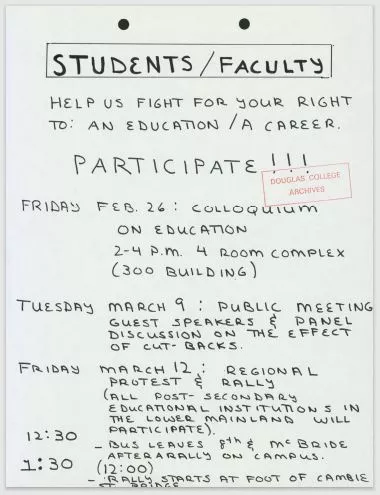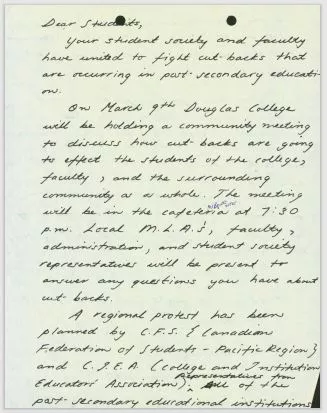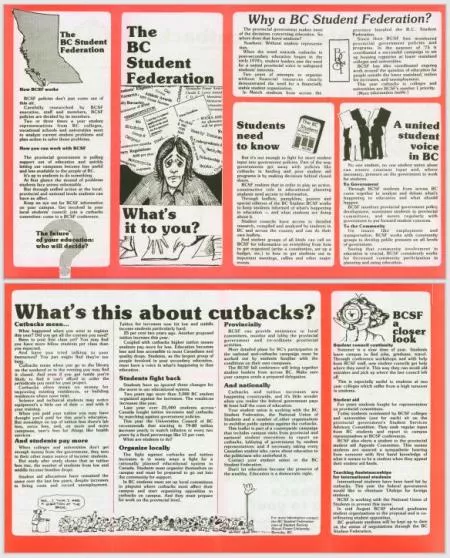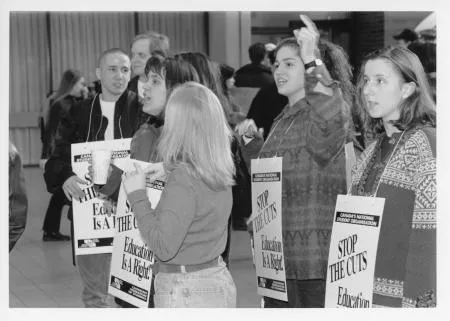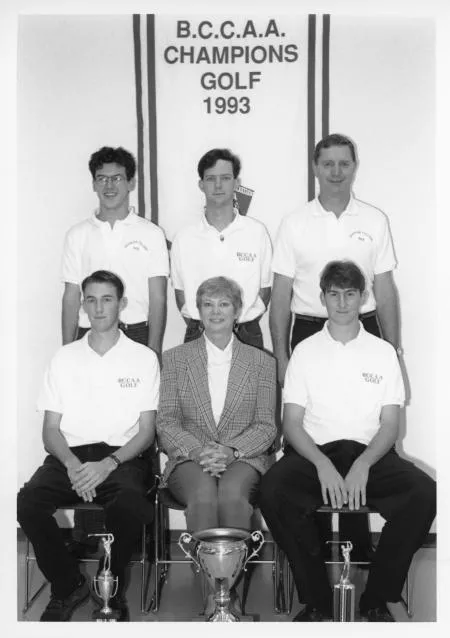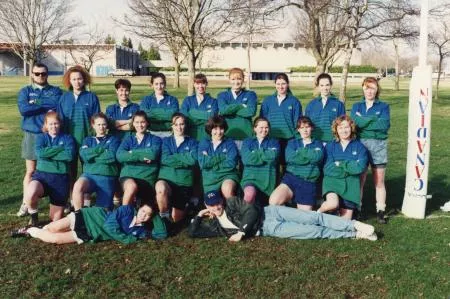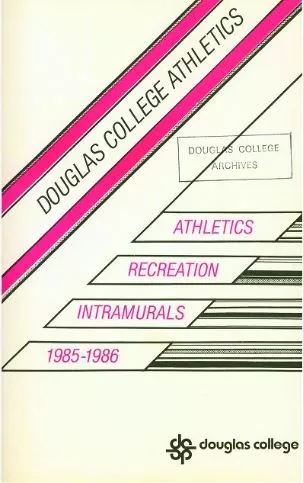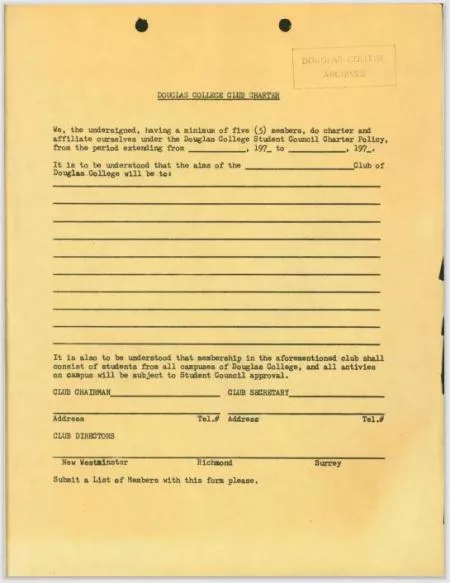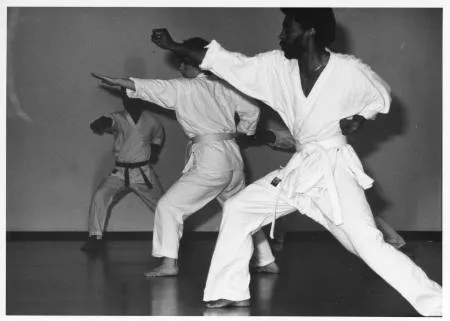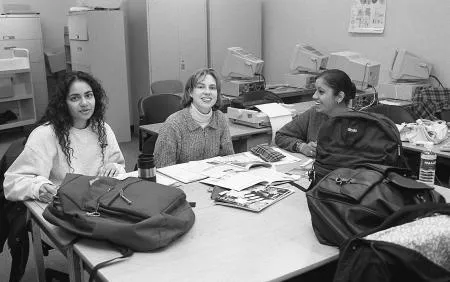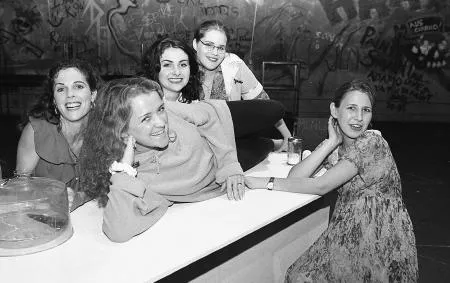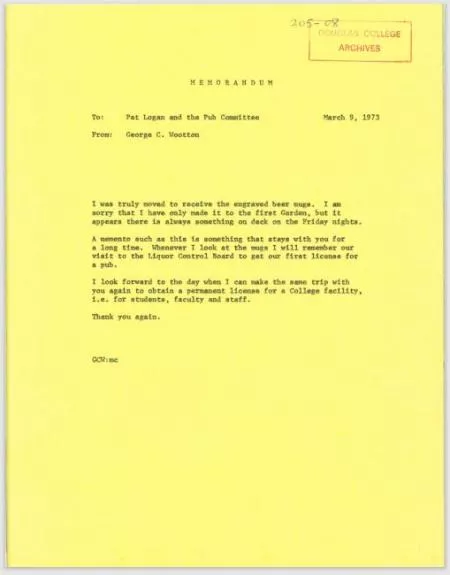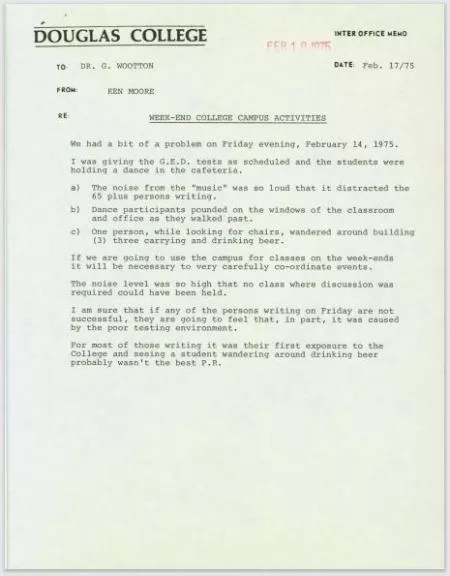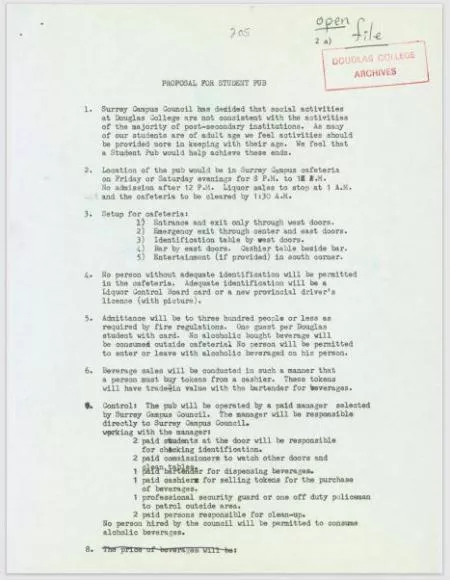Student Life
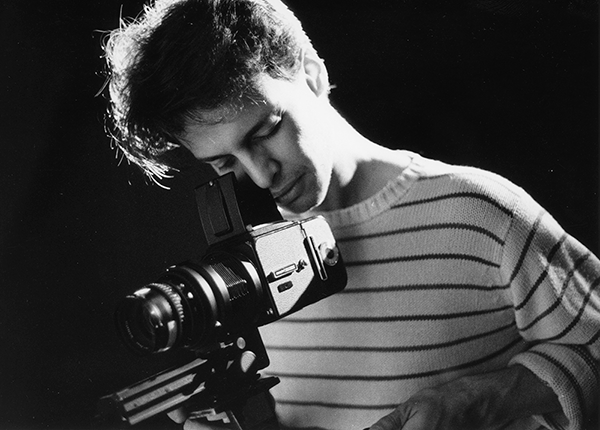
As part of BC’s Archives Awareness Week (Nov 13-19), the Douglas College Archives is showcasing photos, textual materials, and videos that highlight Student Life throughout the College’s history. “Student Life” is a mixture of the time spent inside and outside the classroom throughout one’s studies. It represents the academic, social, and even administrative forces that shape a student’s post-secondary world and influence the person they will become by graduation time.
We’re featuring materials that document the classes students have taken from various academic disciplines, the resources and services offered on campus, the social opportunities open to students such as dances or sports teams, and examples of student activism.
"[The College's] duty lies, in addition to making students employable, in fitting them to better themselves and their community. Like all institutions of higher learning, it seeks to develop in each student the ability to teach himself, while realizing that this is a goal achieved by few."
- Douglas College Calendar, Fall 1970
Getting Started
Parts of our collection capture the perennial headaches that came with in-person course registration, which was a part of student life until 1992 when registration-by-phone became an option. (Online course registration was implemented in 2002.)
Each semester, long lines snaked through corridors on multiple campuses as students consulted timetables and staff did their best to enroll students in their first, second, or third choices. In his history of Douglas College, Gerry Della Mattia notes that demand for courses regularly exceeded supply. He quotes one College employee who said in the mid-80s: “On the second and third day of registration you have students crying with frustration.”
Programs Past and Present
At the time of its founding, Douglas College offered academic programming in three areas: Career Programs, University Transfer, and Continuing Education. An institutional archives like ours contains a wide array of records documenting changes to the College’s academic profile. Users interested in tracking the evolution of the College’s diploma and degree offerings can, for example, review minutes from the Curriculum Committee’s early meetings and check out successful or rejected course-creation applications. We have digitized over 30 years of academic calendars which contain course descriptions, administrative and academic policies, faculty lists, and so much more.
The Archives is also home to many photographs of courses no longer offered at the College such as “Makeup for the Stage” and “Musical Instrument Repair.” In other cases, there might be a lack of pictures but plenty of textual records related to now-defunct programs like the College’s short-lived Horsemanship Program. It’s hard to believe that in the 1970s, Douglas College hoped, in the words of continuing education programmer Earl Naismith, to “become THE horsemanship centre for B.C. for approximately 18,000 horsemen owning 36,000 horses.”
Archival records like correspondence, questionnaires, and meeting notes provide unique perspectives on the academic experience of students at Douglas College. These materials may not be as flashy as, say, a photograph of Fashion Design students modelling their creations but they can reveal interesting behind-the-scenes details about putting on a year-end fashion show. (Woodward’s department store will only host the show if we purchase 60% of fabric from them? Thanks but no thanks!)
"Survive and Thrive at Douglas College"
By the end of the 1970s, Douglas College was made up of eight distinct campuses in five cities, with the Douglas College Student Society (DCSS) governed by the “Multi-Campus Council.” This body was comprised of elected representatives from eight Campus Councils: New Westminster, Surrey, Richmond, Coquitlam, Langley, Maple Ridge, Agnes Street, and Newton Centre. Such an expansive institution – geographically and academically – made guidebooks for students all the more valuable, especially prior to the “college split” which resulted in the creation of Kwantlen College. The DCSS and the Student Services Division annually published student handbooks filled with everything a student would need to know at Douglas, from the cost of textbooks to the right to appeal final grades.
The Archives has preserved several copies of student handbooks, some of which contain handwritten notes and marginalia, such as a DCSS welcome speech scrawled in a copy of Survive and Thrive at Douglas College (1981-82). Users can see that the author originally planned to end their address with “A final wish is that I may see you at our many college functions” only to scratch that out and replace the line with “I hope that you will enjoy our many college functions”. This is just one example of the kinds of unique – sometimes quirky – insights gleaned through archival research.
Activism on Campus
College is the time when many young people experience their first forays into activism and social justice movements, and students at Douglas are no exception. They have a long history of addressing social and economic concerns through rallies, protests, and even acts of civil disobedience. In 1983, the DCSS joined the province-wide Solidarity Coalition to oppose the B.C. government’s austerity measures, with student president Sean Balderstone stating: “This legislation hurts so much we’re willing to give up a semester.”
Five years later, in February 1988, when a labour dispute resulted in faculty voting in favour of a strike, the DCSS actively supported the position of their professors. Some students boycotted classes and the DCSS organized a large rally. The event culminated in a sit-in outside the offices of College president Bill Day where they sang songs and brandished signs. Day came out to speak with the activists, agreeing, among other commitments, to reconsider a previous decision that excluded student representatives from bargaining committee meetings. Rich Shepherd, DCSS secretary, told The Other Press: “This was an important day at the College and proves that students are not as apathetic as most people think.”
A Voice for Students
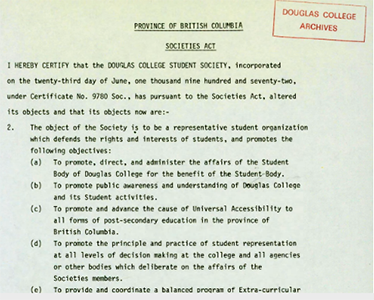
The DCSS, which would eventually change its name to the Douglas Students’ Union, was incorporated in 1972. Its goal was to act as “a representative student organization which defends the rights and interests of students.” The DCSS promoted a wide range of specific objectives, all of which are outlined in a copy of its original constitution, housed in the Archives. This item is among the almost 270 folders of DCSS records deposited in the Archives between 1984 and 1985, which document the Society’s early years and its impact on student life at the College.
Students on the Small Screen
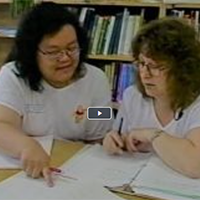
While the history of student services is well-documented in textual records – especially materials like meeting minutes, brochures, and pamphlets – the Douglas College Archives is also home to over 500 audiovisual items, many of which capture initiatives to support or engage with students. These AV items range in format from ½-inch open reel video to audio cassettes to camcorder tapes.
In this 2000 promotional video for The Learning Centre, a fictional student named Tim seeks tutoring assistance.

